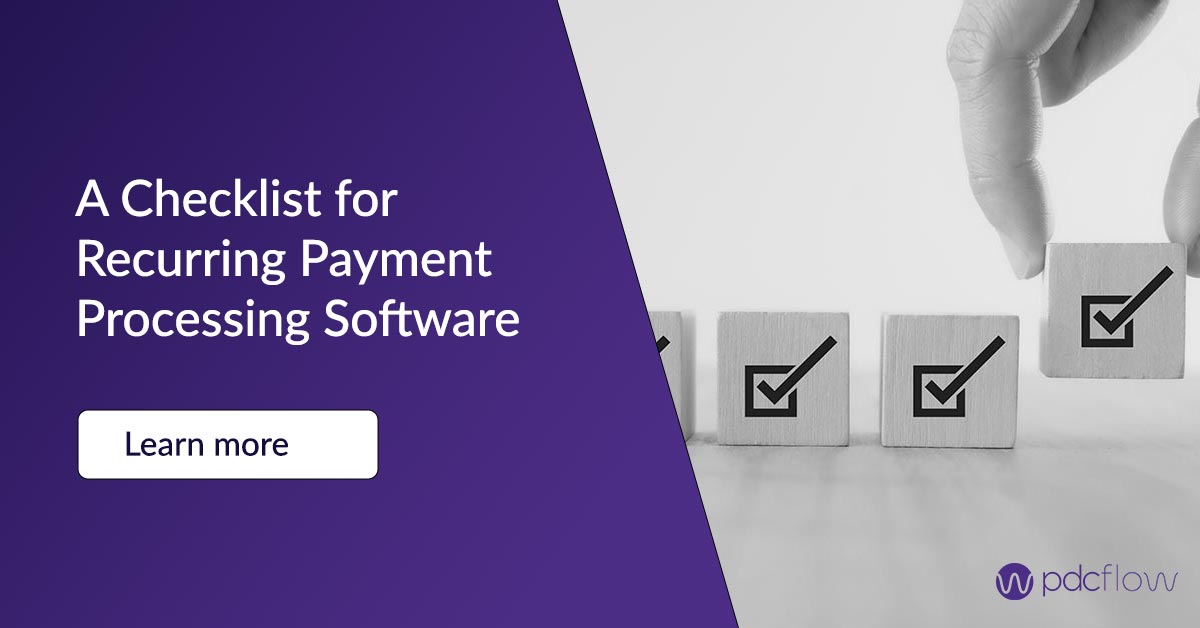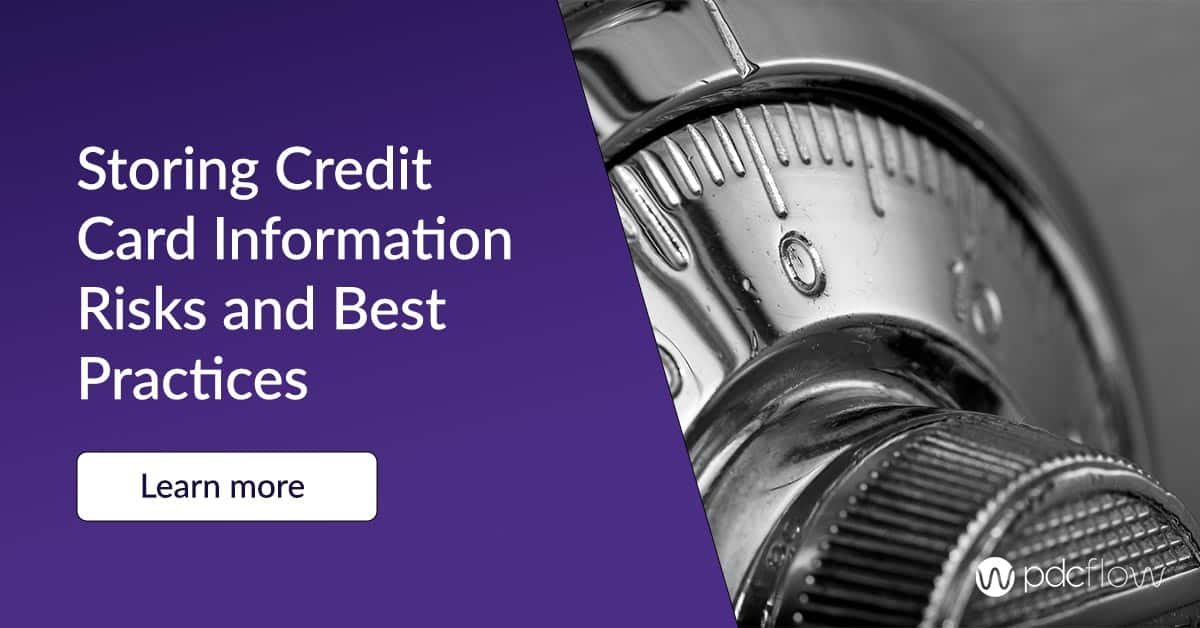A lot of businesses don’t know how to set up recurring payments that make sense for customers and still bring in revenue. The most effective recurring payments balance the parameters of payment schedules, business needs, and customer preferences.
The first step to successful scheduled payments is to know how, why, and when to accept recurring payments. What is a recurring payment plan and how can your company take advantage of them?
What is a Recurring Payment?
Recurring payments are a sequence of payments made at regular intervals. These plans are usually created to break down a large balance into smaller, more manageable payments.
Recurring payments can also be taken as part of a subscription billing model for recurring services.
Why are recurring payments beneficial to business?
Recurring payments make paying bills easier – and the easier it is to pay, the more money your company is going to make.
Before learning how to set up recurring payments efficiently, it’s important to understand why they matter.
Some of the most compelling reasons for companies to use recurring payments are:
Customer Satisfaction
Recurring payments are a good way to offer more payment options to customers.
Any time you can improve the customer experience, your organization will Increase satisfaction and customer loyalty by listening to what people want.
Easier Revenue Prediction
In some cases, establishing payment schedules can make it easier to predict monthly revenue. Most companies create reports predicting how much money they expect to see in future months.
Having guaranteed revenue from payment plans helps take the guesswork out of these reports.
Fewer Missed Payments
Missed and late payments are always a hassle. When bills go unpaid, companies need to spend extra time, effort, and money making follow up calls and sending out reminders to recover those funds.
Automatic payments in a recurring schedule eliminate missed or overdue bills.
Customers don’t need to remember to log onto your website’s payment page every month or call into your customer service line just to pay.
Instead, they choose the date to pay and agree to the amount, and your payment processing software should automatically take care of the rest.
Why do customers like recurring payments?
As a customer, one of the most enticing factors in choosing a recurring payment program is the ability to pay a large balance in installments rather than all at once.
This model provides the flexibility and affordability that many people need when it comes to an expensive purchase.
Part of this appeal for recurring payments comes from choosing the timing and amount they will pay each month.
That’s why your company’s recurring payment structures should accommodate a wide range of dates, payment amounts, and payment methods so people can choose what works best for them.
What makes recurring payments customer-friendly?
How PDCflow solutions create a customer-friendly experience
Businesses can choose to allow:
- Weekly
- Biweekly
- Monthly
- Payments that coincide with paydays
- Payments set up by balance owed
PDCflow’s Payer Created Schedules are a way for consumers to set up a recurring payment schedule in a self-serve environment, without the help of an agent.
Through administrative configuration, your customers can choose to:
- Pay in 4 equal amounts
- Choose to pay a minimum amount
How to Set up Recurring Payments
When your office trains staff members how to set up recurring payments, there are typically two ways these schedules can be created.
With the help of an employee
The most common way to create a recurring payment schedule is with the help of an employee. Usually, this is a popular option in situations when customers have questions about their options or need to create a specific payment schedule.
PDCflow’s software lets your staff create a recurring schedule and send the plan for customer approval through email or text message. Customers can review the details and approve the plan faster.
Through a self-serve payment page
Letting customers create their own schedules is an excellent way to provide better customer service. Payer-created schedules through a payment portal boost engagement and payment rates.
Even when you’re not showing customers how to set up recurring payments directly, you’re providing them tools to pay the way they prefer.
Best Practices for Setting up Recurring Payments
Customer needs
Customers need:
- To know you can schedule a payment to coincide with payday or other days of the month that are best to pay
- Credit card and ACH payment options
- Automatic receipts after they pay, so they can keep track of each installment
- Easy ways to sign an authorization, through email or text message requests
- Payment reminders before each payment is processed
Business needs
Many of the items customers want and need are also central to payment compliance with Regulation E. Along with these items, companies need to protect revenue by creating schedules that make sense and actually keep bringing in money each month.
Long, low-dollar schedules aren’t good for anyone. They draw out the payment process and create fatigue and negative feelings in your customers. To avoid bad schedules, companies need:
Global settings for minimum payment schedule amounts
Customers may only want to pay $5 or $10 per month on a large balance. While this seems good for them in the short term, having a low monthly payment is often bad for everyone involved.
Calculate what the lowest average monthly payment your organization can manage while still making money. Your payment software should allow you to set global minimum amounts, so no customer or employee will even have the option to set an unrealistic schedule.
Global settings for payment schedule duration
No one wants payments to stretch on for months or years beyond what is reasonable.
Your software should allow you to set maximum payment terms for schedules, so the plans you create don’t lock customers into a payment plan for years beyond what they need.
Recurring Payment Schedule Negotiation
Recurring payments are often a benefit to businesses and customers alike. But sometimes finding a payment schedule that works for both parties is hard.
Understanding some basic negotiation tactics can help employees create plans that are both realistic for customers and profitable for your organization. When negotiating a plan, especially for customers who are having a hard time affording payments or are late in paying, remember:
- Show empathy - sometimes financial changes happen between the time goods/services are delivered and the bill is due. Be understanding of circumstances that might make it hard for customers to pay, and come to the conversation ready to help.
- Empower employees to problem solve - Special cases become easier to navigate when your staff feel prepared to handle them. Train frontline employees to respond with creative payment options when customers are late payers or have other issues.
- Suggest a down payment - A large bill or high monthly payments can create stress. If it makes sense for your business, offer the option for customers to make a larger one-time payment to bring down the total they owe, which will reduce monthly payment amounts.
PDCflow Recurring Payment Features
Knowing how to set up recurring payments that work for your business and customers is important. But it can’t happen without the right software. Your company needs to understand what features are important to your business, your employees, and the people you serve.
PDCflow’s recurring payment schedules balance the flexibility customers want with the administrative controls and compliance features companies need. PDCflow recurring payments:
- let administrators control how long a payment schedule can last as well as the minimum monthly payments customers are allowed to make.
- let companies send schedules to consumers for approval via email and text for faster compliance and schedule setup.
- automate payment reminders before each payment is deducted for simple payment compliance and faster workflows.
- offer Card Verify and ACH Verify to reduce failed payments during a schedule and fight fraud. These features authenticate a card or bank account details before the first payment is processed, so you know right away if a payment method is valid.
- include payer-created schedules, so customers can create their own payment plan without the help of an employee.
For more information on adding recurring payments to your business, request a demo with a PDCflow Payment Expert today.





